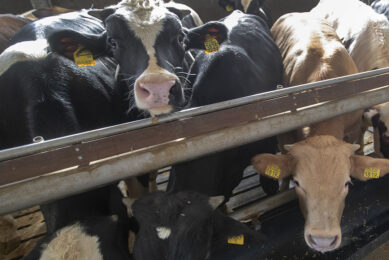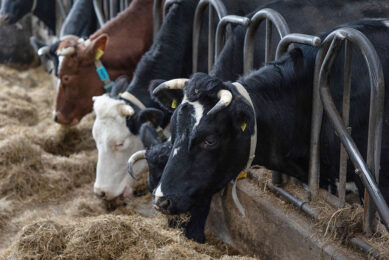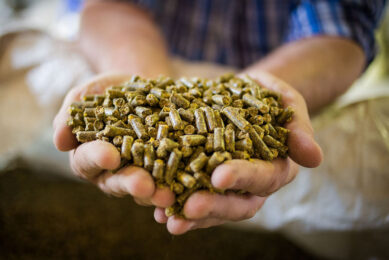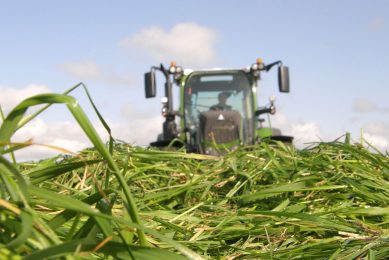Albanian feed sector: minimal but significant
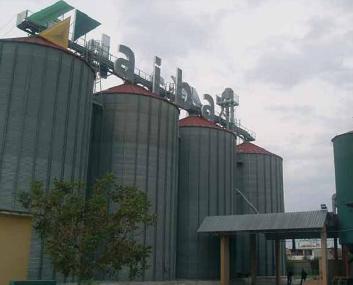
Certainly, Albania means nothing within world feed production, but it is an existing industry and although stillpioneering it has a meaning for the country.
By Sabah Sena, Tirana, Albania
The Albanian feed industry offers all kinds of feeds for the local livestock producers, except fish and pet food. Two feed mills offer the feed in both mash and pelleted form. All raw ingredients are imported, except for limestone. The main sources for raw materials are neighbouring countries, mainly Italy and Greece but other countries, like France, Romania, Bulgaria, are also used.
The biggest constraint for direct imports from big producers such as the USA, Brazil and Argentina is the fact that Albania’s main harbour, Durres on the Mediterranean Sea, can receive shiploads to a maximum of 12,000 metric tonnes, so Albanian feed producers are always forced to buy raw ingredients through middle-persons/companies.
Prior to privatisation of state-owned enterprises there were nine feed mills located throughout Albania. Some of these remained partially operational until 1997, when the financial system based on investments in pyramid funds collapsed.
Actually, the main players within the Albanian feed industry can be considered in two main categories: companies that produce feed, first to supply their own needs, but also for commercial purposes and companies that only produce for their own needs. All of these companies deal with poultry farming.
It needs to be mentioned that the Albanian integrations (see Box, scroll down) have invested in purchasing the latest production technology. These producers are quite familiar with the well-known companies such as: Bühler, Brock, Van Aarsen, Big Dutchman, Facco, Chore Times, Pas Reform, Farmer, Chemifarma, Lohman, Schauman, etc. Equipment produced by these companies is the core production technology of the Albanian feed, poultry and swine producers.
Each of the largest integrated layer operations in Albania is producing its own feed from imported protein sources (soybean meal), grains (corn) and premixes. This trend is repeated in swine operations throughout Albania. There is only one company that manufactures feed on a commercial basis. Agrotec, part of the AM Group, has a projected production capacity of 10 tonnes/hour. It is as a sub-unit to a sunflower processing plant located close to Tirana. As envisioned, this feed mill utilises the protein meal that is left after the extraction of oil from sunflower seeds.
Several swine operations are producing their own feed with imported protein sources (soybean meal or protein concentrates), local and imported grains and imported premixes. Most of these are using outdated, but serviceable equipment.
Ruminants
The dairy industry (cows, sheep and goats) is characterised by thousands of small producers with 1-3 cows, perhaps 200 herds of 5-10 cows, about 50 herds of 10-50 cows and only seven herds with more than 100 cows.
The largest producers make their own feed. Some of the medium size producers use limited amounts of imported concentrates and premixes. The small producers feed forage only. The need for dairy protein concentrates and premixes is obvious. These products would increase liquid milk production and improve milk value by increasing milk fat content. Increased liquid milk production could replace current imports of liquid milk. Increased milk fat content would increase the amount of cheese and yogurt produced. The economic benefit would be distributed throughout the value chain. Some of these grinding operations also offer imported protein concentrates and premixes for sale. There are approximately 10-15 import businesses in Albania that specialise in the sale of protein concentrates, vitamin/trace mineral premixes and health products to food animal producers (most of these products are of Italian or Greek manufacture, although some French and German products are also to be seen).
The actual consumption of soybean meal is in the limits of 20,000 – 24,000 metric tonnes/year, but as it can clearly be seen with the number of heads (Table 1), potentially this consumption can reach levels of 50,000 – 100,000 t/year.
Poultry most important sector
As far as the estimation of the total feed production in Albania is concerned the following figures are to be considered. Out of 150,000 t of finished feed, over 80% is used by poultry (layers, broilers, turkeys) since this is the most developed, organised and updated sector. Then 15% of total feed production is being used by the commercial dairy/cattle producers, who are very few in numbers compared to the total number of cattle farmers. These are very high in numbers, but very small in size (the country average is just a little bit more than one cow per family, i.e. 634,000 cattle/47086 farm-families). The small families grow and produce their own feed for their limited number of animals, usually one cow, or a few sheep/goats, and 5-10 chickens.
Companies that produce feed, first to supply their own needs, but also for commercial purposes: |
If you would like to know more about the feed industry in Albania contact the author at sabahsena@yahoo.com
Feed Tech Vol. 13 No. 1, 2009




